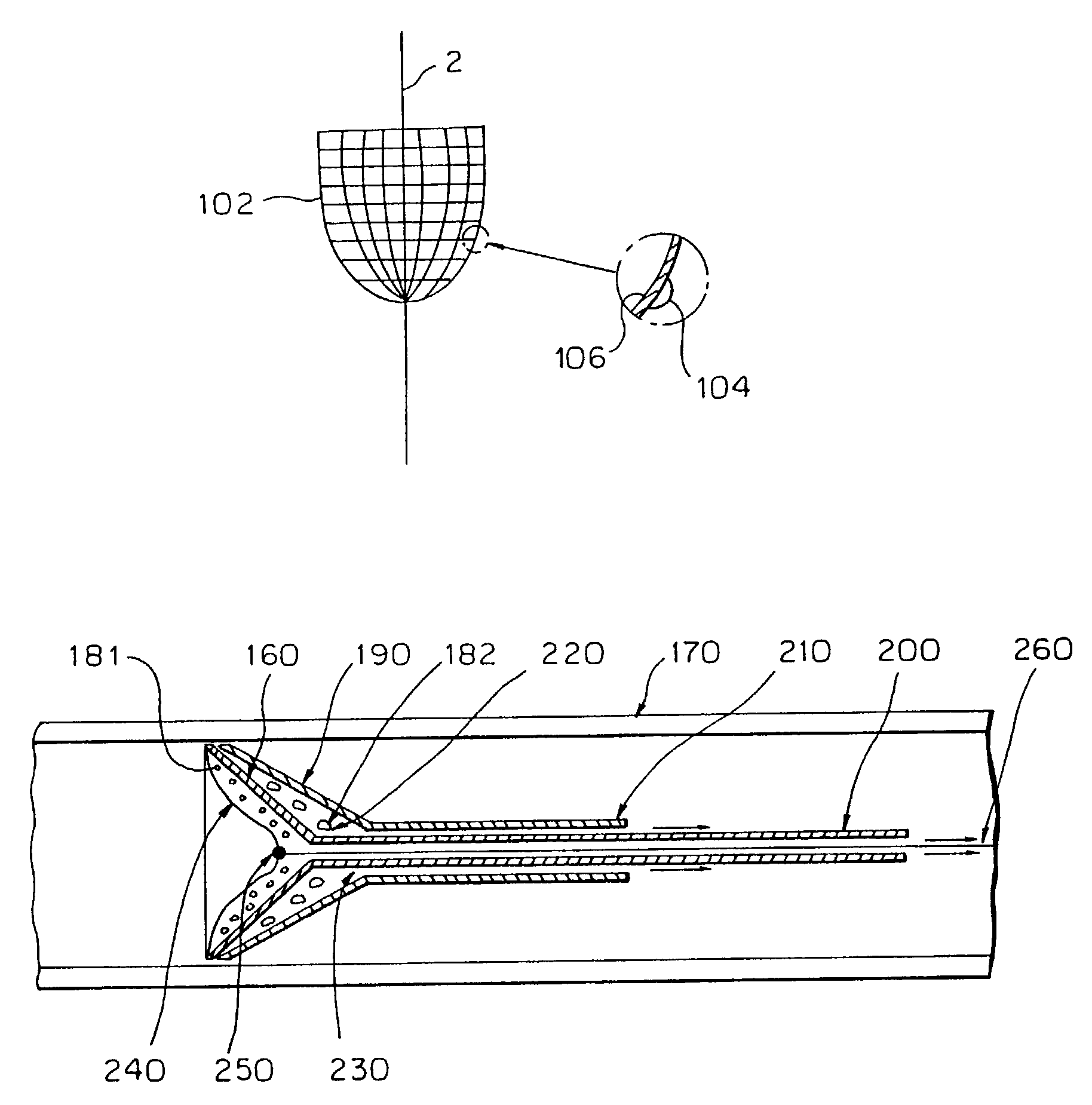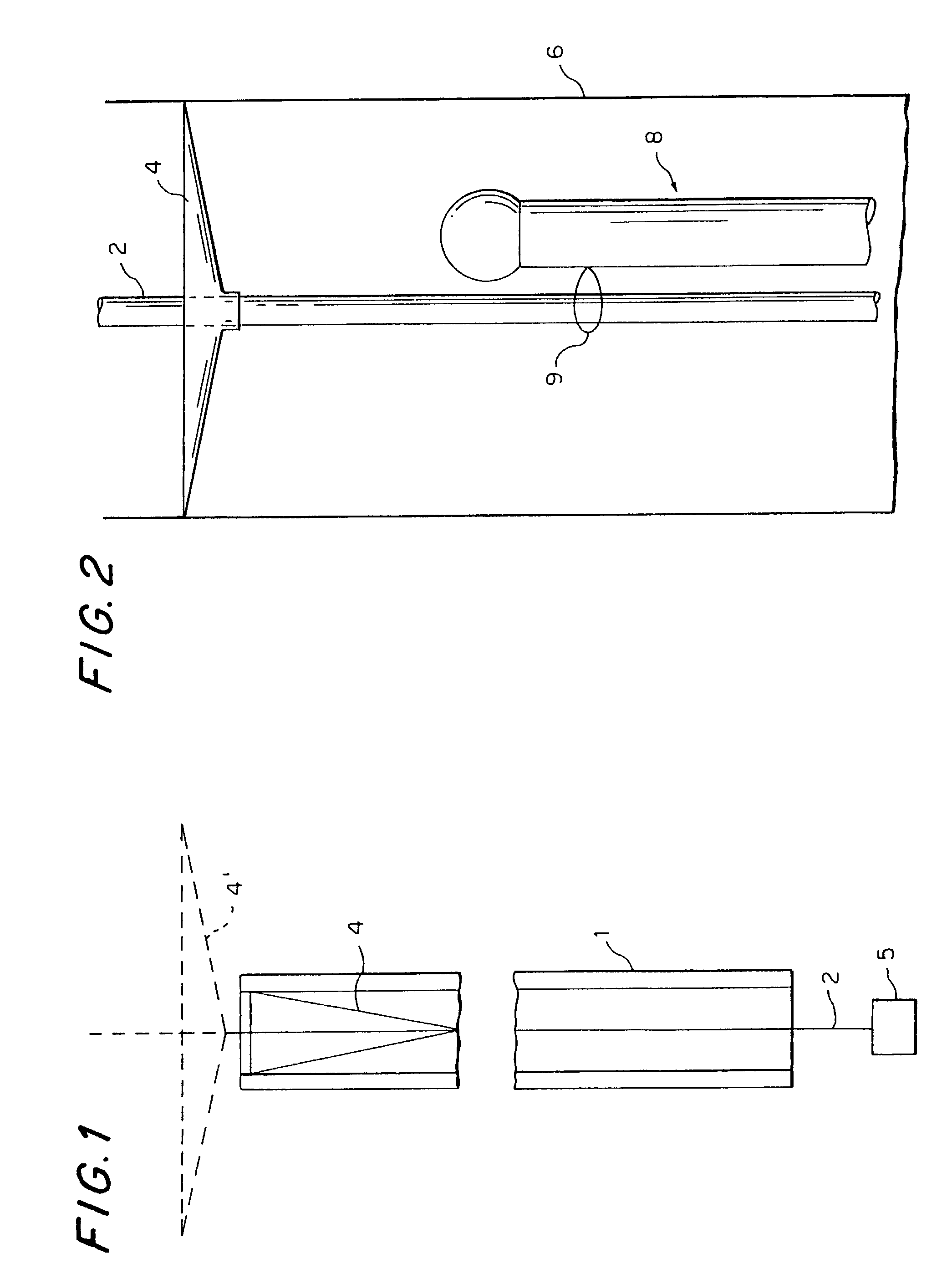Vascular filter with improved strength and flexibility
a vascular filter and improved technology, applied in the field of medical devices, can solve the problems of easy tear of membranes, difficulty in using tortuous arteries, and filter holes not having a well-defined and constant size, and achieve the effect of improving strength and flexibility
- Summary
- Abstract
- Description
- Claims
- Application Information
AI Technical Summary
Benefits of technology
Problems solved by technology
Method used
Image
Examples
Embodiment Construction
[0075]The invention provides a novel method and a system to confine and remove debris from a blood vessel, thereby preventing embolism in the vascular system.
[0076]A first step of one embodiment of a method according to the invention includes positioning a first particle filter in the blood vessel downstream of the treatment site.
[0077]FIG. 1 is a cross-sectional elevational view of a first unit of a protective system according to the invention for carrying out the first step. This unit is composed of a sheath 1, a hollow guide wire 2 and a distal particle filter 4.
[0078]Filter 4 may have any shape, for example a conical shape, as shown, and is constructed to be radially expansible from a radially compressed state, shown in solid lines, to a radially expanded state, shown in broken lines at 4′. Preferably, at least one part of filter 4 is made of a resiliently deformable material that autonomously assumes the radially expanded state shown at 4′ when unconstrained. Filter 4 may be sh...
PUM
| Property | Measurement | Unit |
|---|---|---|
| particle size | aaaaa | aaaaa |
| diameter | aaaaa | aaaaa |
| diameter | aaaaa | aaaaa |
Abstract
Description
Claims
Application Information
 Login to View More
Login to View More - R&D
- Intellectual Property
- Life Sciences
- Materials
- Tech Scout
- Unparalleled Data Quality
- Higher Quality Content
- 60% Fewer Hallucinations
Browse by: Latest US Patents, China's latest patents, Technical Efficacy Thesaurus, Application Domain, Technology Topic, Popular Technical Reports.
© 2025 PatSnap. All rights reserved.Legal|Privacy policy|Modern Slavery Act Transparency Statement|Sitemap|About US| Contact US: help@patsnap.com



